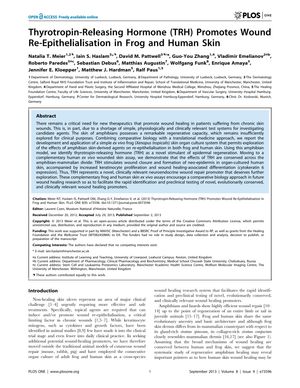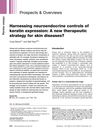Thyrotropin-Releasing Hormone Promotes Wound Re-Epithelialisation in Frog and Human Skin
September 2013
in “
PLOS ONE
”

TLDR Thyrotropin-Releasing Hormone helps heal wounds in frog and human skin.
The document from September 2013 describes a study that demonstrated Thyrotropin-Releasing Hormone (TRH) as a promoter of wound healing in both frog (Xenopus tropicalis) and human skin. The study utilized an ex vivo skin organ culture system and found that TRH significantly stimulated wound closure, keratinocyte proliferation, and the formation of neo-epidermis. In human skin, TRH treatment resulted in increased re-epithelialisation and proliferation, particularly at concentrations of 5 and 10 ng/ml, and up-regulated the expression of cytokeratin 6 (CK6), a marker for wound healing. The study involved 16 frogs and skin samples from 4 human female donors, with the results indicating that TRH is a conserved stimulator of epithelial repair across species. The findings suggest that TRH could be a clinically relevant promoter of wound repair and highlight the value of a comparative biology approach in future wound healing research.






